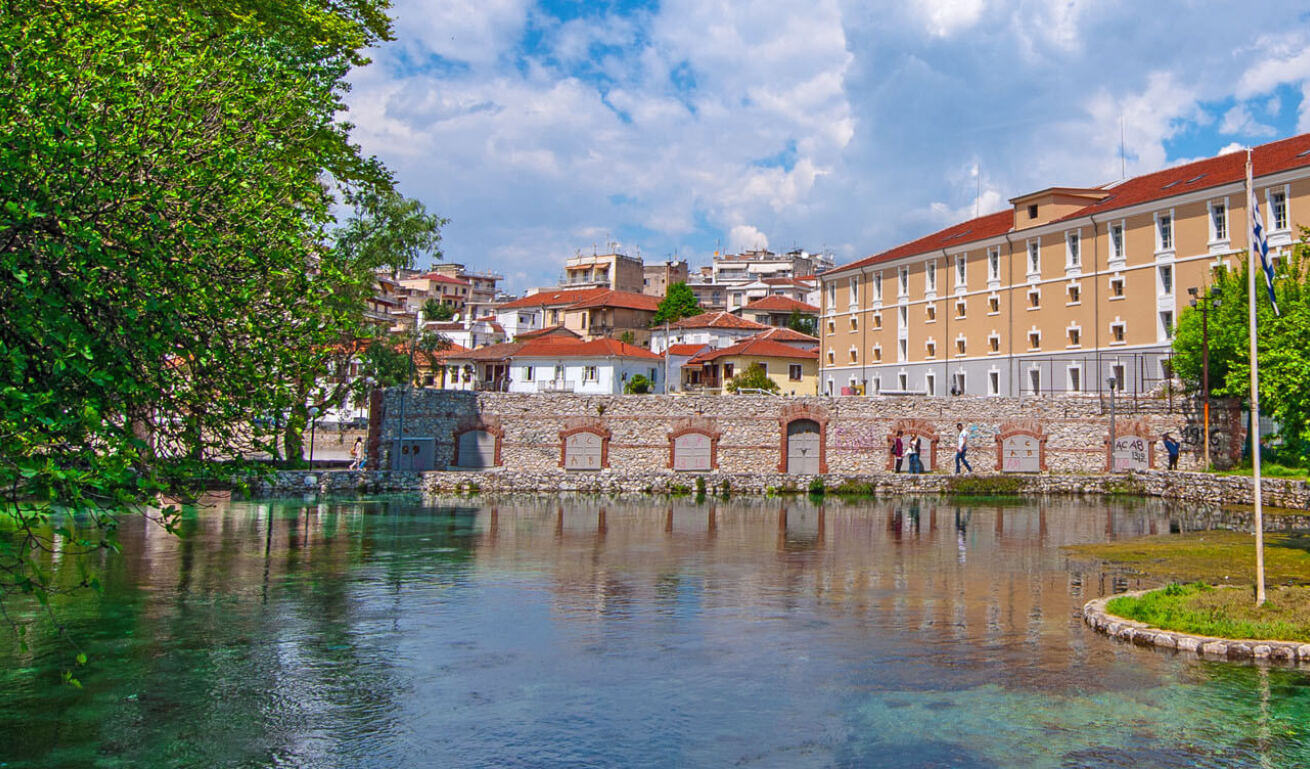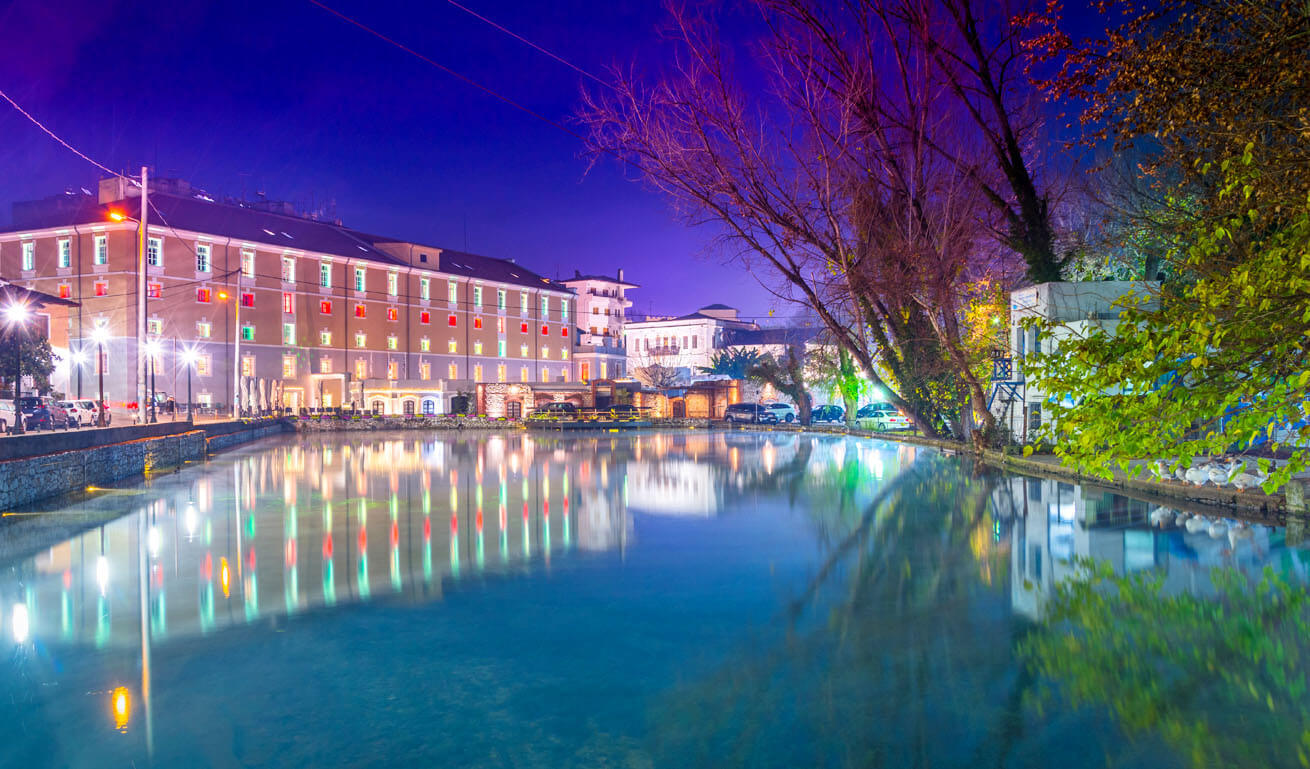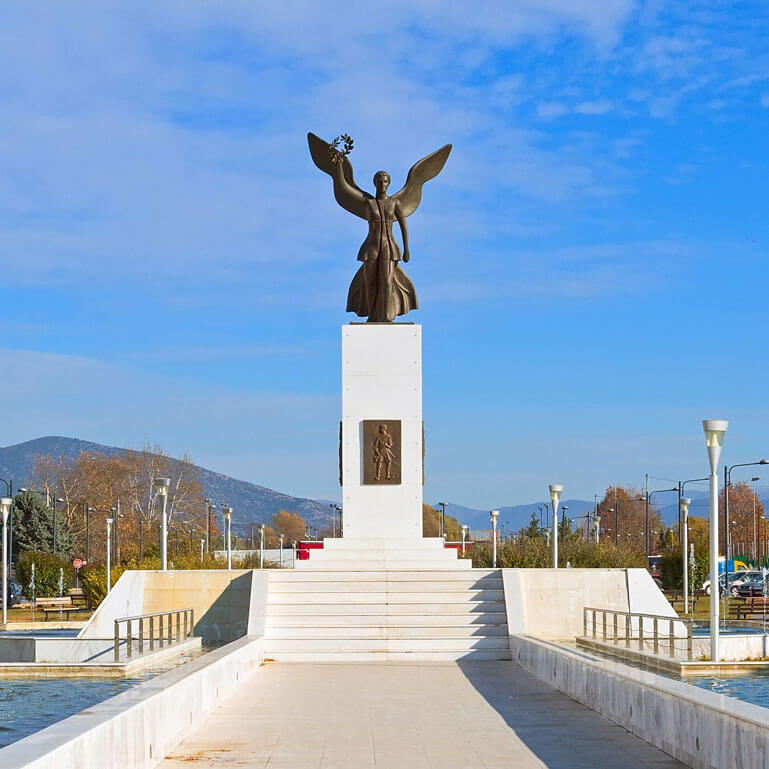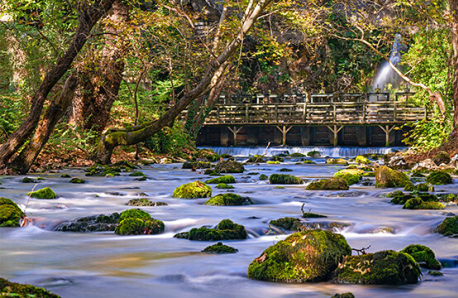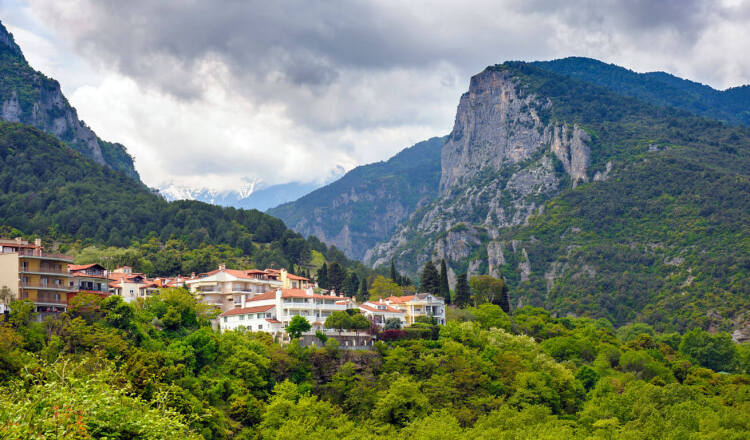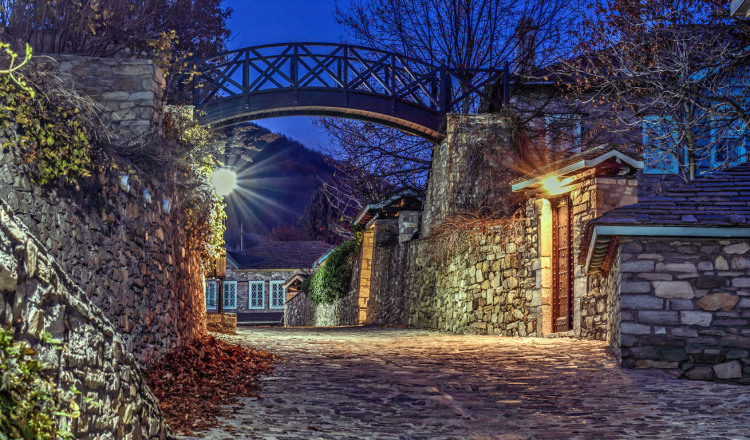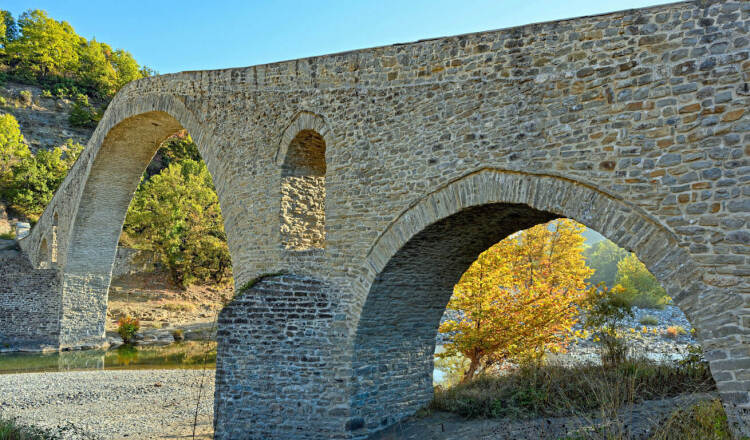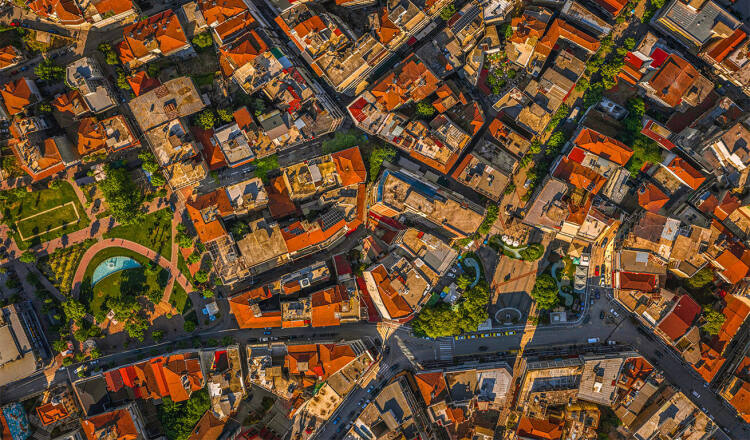
Drama
NOW
12 °C
Next 5 days
-
MON
7 °C
-
TUES
7 °C
-
WED
2 °C
-
THURS
2 °C
-
FRI
4 °C
Climatic Data
Source: National Observatory of Athens /meteo.gr
Unique Experiences
Must see attractions
- A Macedonian Tomb of the Hellenistic years found in the city (near the Court square) is evidence that the area was inhabited during historic times.
- The Tomb Cluster from the Iron Age found in the area of the Drama Industrial Zone.T
- The Agia Varvara Park, an idyllic location in the city centre with fountains, small lakes and waterfalls, tavernas, an outdoor theatre and leisure venues. There you will see the traditional watermills and the multi-storey tobacco warehouses, reflecting in the waters of the Lake.
- The Anastasiadis Mansion (1876), faced with the famous local marble, which is one of the basic elements that helped the development of the whole area.
- The complex of the old schools (1907) on the crossroad of Perdika and Venizelou Streets.
- The renovated building of the oldest cinema/theatre of the city ("Olympia", 1913) opposite the Metropolis.
- The Municipal Art Hall "Eleftheria" housed in a renovated, traditional coffee shop of the City.
- The Agia Sophia Byzantine Church (10th century). Around the Church you can see the ruins of the Byzantine Walls originally built in the 10th century. Near the walls there is the Taxiarxhes Chapel, built during the Palaiologos Family era
- The Archaeological Museum, situated by the verdant Municipal Garden includes noteworthy finds from the area, dating from prehistoric until recent years. The mammoth tusk found at the entrance of Maara Cave (Aggitis Springs) is particularly interesting.
- The Ecclesiastical Museum, housed in a modern wing of the Bishop's Mansion includes objects of ecclesiastical art.
- The Korylovos Hill covered by pine-trees, with a tourist pavilion, sports facilities and a marvellous view.
Near-by destinations
- Choristi 5km SE. This location has been inhabited since Roman times and has been linked to economic development since the 19th century, thanks to tobacco farming and trade. It has been distinguished for its cultural tradition. It is worth seeing the Church of Isodia tis Theotokou (1906) with six Icons by the significant Greek painter K. Parthenis, the reading room of the same period and the neoclassical buildings of the 1920’s. Visitors flock to this village on Ash Monday to participate in the Carnival events.
- Monastiraki, 6km N, on the eastern foot of Mt Falakro is known for the marble craftsmen originating from the village, and also for a very old custom called "Arapides" with roots going back to the worship of Dionysus, revived every year on January 6.
- Adriani 7km E. This is a historic town with a human presence since antiquity, shown in the ruins of the first castle in the area, at the location of Ai-Giannis. Today, it is famous for its excellent wines and Tsipouro. You may visit the wineries of the area (K. Lazaridis, Manoletsaki, Oenogenessis and N. Lazaridis) and follow a guided tour of the production facilities, in the cave and the degustation rooms, in order to taste the international award winning wines. Further to the East there is the village of Agora, featuring an organised park of predatory birds.
- Taxiarches 10km NE. Here, you will find the female convent of Analipsi tou Sotira (Sipsa).
- Doxato, 10km SE is a historic town with well preserved neoclassical buildings that reached the peak of its development in the 19th century thanks to tobacco production and trade. It is worth visiting the renovated Schools of 1908, the Agios Athanassios Church (19th century) with beautiful frescos and an icon screen, as well as the Municipal Garden. On May 2, during the Agios Athanassios Fair, among other festivities, there are traditional horse races with thoroughbred horses.
- Agios Athanassios 12km SE. This is a small rural town close to Kefalari. It is worth visiting the leisure area, under the shadow of a plane-tree, in Voirani Springs (between the villages of Ano and Kato Kefalari). An ancient grape press for wine production was discovered near the springs.
Events
- Short Film Festival, in September (www.dramafilmfestival.gr).
- "Eleftheria", cultural events in commemoration of the city's liberation, at the end of June or beginning of July.
- "Anastenaria" (walking on fire by refugees from Thrace), in the village Mavroleki, held on the name day of Saint Constantine and Helen, on May 21st.
- Dionysian events in the villages of Monastiraki and Xiropotamos.
- The young musicians festival.
Mt. Falakro
Activities within the area
- Skiing
- Snow boarding
- Mountaineering
- Hiking
- Paragliding
- Climbing
- Mountain bike riding
- Off road courses with jeeps
Latest Events
VIEW ALL
BY CAR
From Athens via PATHE (Athens-Thessaloniki), and continue via Egnatia Odos to Drama, the journey is 7 hours. From Thessaloniki via Egnatia Odos to Drama the journey takes about 2 hours.
